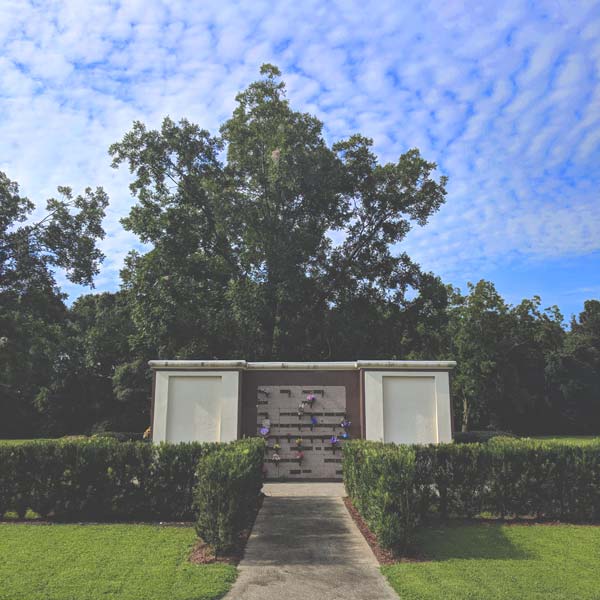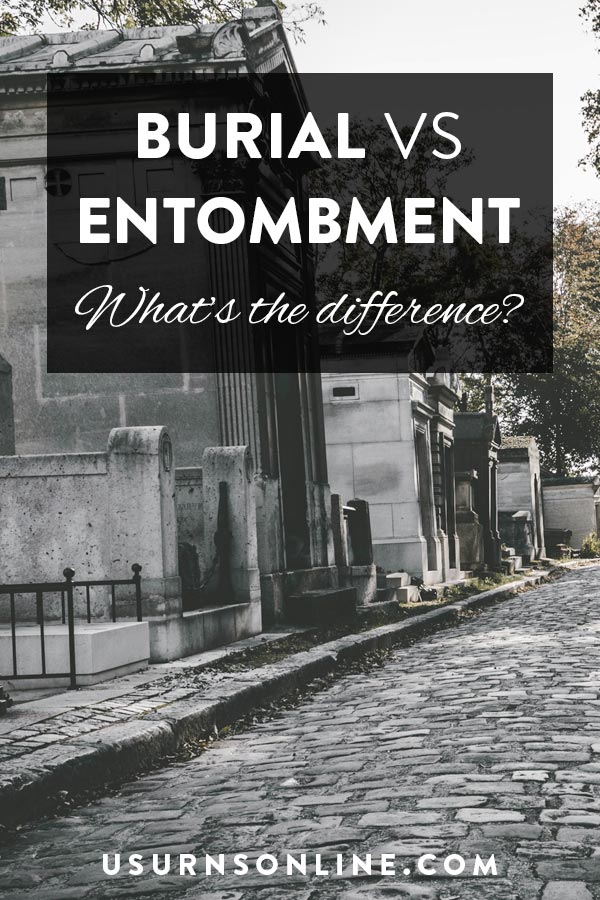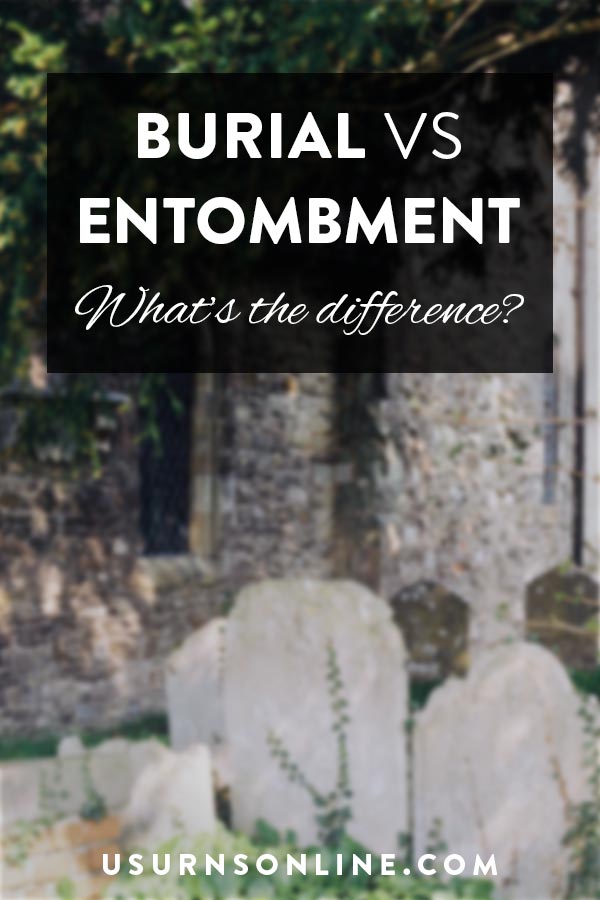What is the difference between burial and entombment? These two terms are commonly used in the funeral world, but what do they mean? And which should you choose?
In this post we’re going to talk about burial, entombment, and the difference between them. Let’s take a look.
Burial vs. Entombment
TL;DR: The difference between burial and entombment is that in the first, the decedent’s body is buried in the ground, while in the latter the body is placed into a niche within a burial structure such as a crypt or mausoleum.
Burial

What is burial? The term “burial” typically refers to the traditional ground burial of a body in a casket.
The burial plot is dug out at the cemetery (or, occasionally, at a home or private property) to a depth of about 5-6 feet. While the common assumption is that graves are six feet deep, in reality most graves are dug so that the top of the casket will be about two to three feet below the surface.
Depending on the size of the casket and local geographic and climate issues, this means that the grave will be somewhere between 3-1/2′ to 7′ in depth.
The body is then buried or “laid to rest” in the open grave. Most often, this is done with the body in a casket.
For a more eco-friendly option, many people choose natural burial with the body buried simply in a burial shroud, a cloth wrapped around the body that will eventually biodegrade and return to the earth.
Learn more: Everything You Need to Know About Burial
Entombment

What is entombment? “Entombment” is when a body is placed inside of a tomb. Tombs can be below ground or above the ground in a man-made structure or even carved into the side of a hill.
Urns Made in the USA
Most often entombment occurs when the body is placed into a niche in a dedicated interment space. These niches can be in a crypt (a room below ground) or a mausoleum (a room or structure above ground).
In the photo above, the mausoleum features exterior niches with plaques on each niche for identification. Some mausoleums have the niches on the interior of the building.
Typically the body is placed inside of a casket, which is then placed inside of a niche in the walls of the tomb, crypt, or mausoleum.
Related: Avoid These 10 Common Funeral Scams
So, what is the difference between burial and entombment?
The main difference between burial and entombment is that burial most often means the casket is placed directly into the ground, while entombment means that the casket is placed into a burial structure such as a mausoleum or crypt.
However, sometimes people refer to ground burial as “entombment” so there can be a little overlap in meaning. Both terms refer to full-body disposition as opposed to the placement of cremated remains.
Cremated remains (aka “ashes“) are placed in a cremation urn which can then be buried, kept at home, or placed into a columbarium niche.
Read more: Final Disposition Options: Cremation, Burial, and More
Pin It





